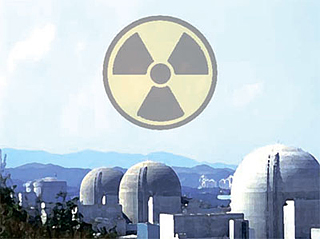Atomic misconceptions

To make his point, he cited the risk of nuclear meltdown from natural disasters like earthquakes. He might have been referring to the Fukushima Daiichi nuclear disaster in 2011, but what had caused that disaster was a 15-meter (50-foot) tsunami accompanying an earthquake. Except for Reactor 1, whose emergency generators were disabled by the tsunami, all other reactors at the Fukushima power plant remained intact. Over 580 nuclear reactors have been active during the last half century, and there have not been serious or deadly radiation leakages caused by earthquakes.
His claim that there were 1,368 deaths and perhaps even more sickened from exposure to radioactive material from the Fukushima accident is also seriously misleading. The death toll is the number of people who died over the past six years from physical and psychological pain over losing their home and property. Two thirds of them were 80 or older. Deaths from radiation exposure were zero.
The World Health Organization has been closely watching for traces of disease and cancer but has not found any. Misleading information has fed fear and anxiety amid reports that the Korean Peninsula is also prone to earthquakes after the southern region of Gyeongju was shaken by seismic movements.
Moon also made a dangerous comparison when he likened extension of the reactor’s lifespan beyond its original design to renovation of an overused ferry like the Sewol, which sank in April 2014 and killed nearly 400 people. Other countries permit lengthening the operation of reactors after thorough safety examinations. Out of 99 active reactors in the United States, 88 are coming up on 60 years, and another 44 have already been in service for more than 40 years. If safety is a matter, the U.S. Nuclear Regulatory Commission would not have given consent to lengthening the lifespan of its reactors. Comparing nuclear reactors to the doomed Sewol ferry is therefore outrageously incorrect.
The policy of phasing out nuclear power and fossil fuels to promote renewable energy sources and natural gas is also fallacious. Under Moon’s scheme, the gap of 20.7 gigawatts of electricity left by nuclear plant shutdown and 6.8 gigawatts from coal-fired plant shutdown will be supplemented by renewable sources and natural gas. Gas-fueled generators will replace nuclear power as a primary energy source, which can disturb the country’s commitments to the Paris climate agreement on cutting down carbon emissions.
When gas fuel replaces nuclear power, electricity bills will go up by around 30 percent from current levels. But given growing gas demand, a spike in import prices could translate to bigger utility fees.
The benefits of atomic power have been unjustly swamped by the exaggeration of its dangers. Nuclear power is a clean and cheap energy source. Even considering the cost of processing spent fuel and potential dangers from accidents, the expense of generating power from nuclear reactors is much cheaper than other sources. Nuclear power saves the country more than 15 trillion won ($13 billion) in annual spending to import fuels.
A space of 102.3 square meters (1,100 square feet) can store fuel rods that can run a 1 million-kilowatt generator for more than 20 years. Since fuel prices take up 10 percent of power generation costs, supply is less exposed to volatility from outside factors. Moreover, Korea earns billions of dollars by exporting its top-class technology in generating commercial nuclear power.
The president’s speech shows he is surrounded by aides with biased views on nuclear power. The only relief is that the administration has mentioned that it would seek social consensus in whether to halt the construction of two reactors at the Shin Kori complex, of which 30 percent is already built. The government must not hurry with its phaseout program based on lopsided views and listen to broader views. It must be able to draw public support for a new energy road map based on accurate information and facts.
Translation by the Korea JoongAng Daily staff.
JoongAng Ilbo, June 21, Page 29
*The author is a professor of nuclear energy systems engineering at Seoul National University.
Joo Han-gyu










with the Korea JoongAng Daily
To write comments, please log in to one of the accounts.
Standards Board Policy (0/250자)